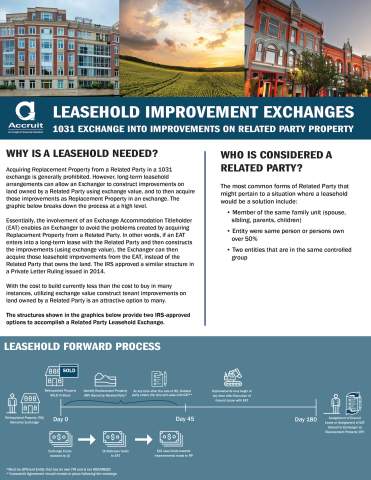Leasehold Improvement Exchange Process

In a Internal Revenue Code Section 1031 states that "no gain or loss shall be recognized on the exchange of property held for productive use in a trade or business or for investment if such property is exchanged solely for property of like kind which is to be held for productive use in a trade or business or for investment." 1031 Exchange , acquiring Replacement Property from a Related Party is generally prohibited. However, long-term leasehold arrangements can allow an Exchanger to construct improvements on land owned by a Related Party and later acquire those Improvements as Replacement Property through a Leasehold Improvement Exchange.
Gain a better understanding on the considerations and process of a Leasehold This refers to a type of exchange done where some of the proceeds of the sale of the relinquished property will be used to cause improvements to be added to the improvements already on the replacement property so that the taxpayer can complete the trade where both the value of the land and of the enhanced improvements will count for the amount the taxpayer traded for. For example a taxpayer may put in new heating, ventilating, air conditioning, roof and windows on the property. These types of exchanges are structured pursuant to IRS Rev. Proc. 2000-37 and are sometimes known as “property parking exchanges” and require the exchange facilitator to take on an additional role as a Qualified Exchange Accommodation Titleholder. Improvement Exchange in this flyer.

